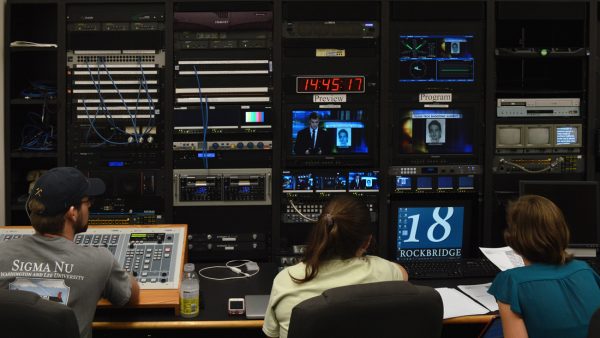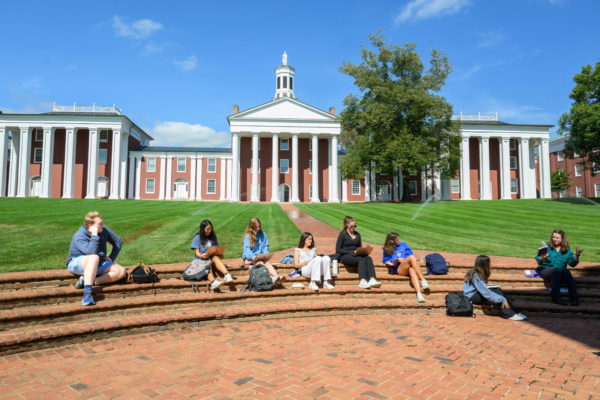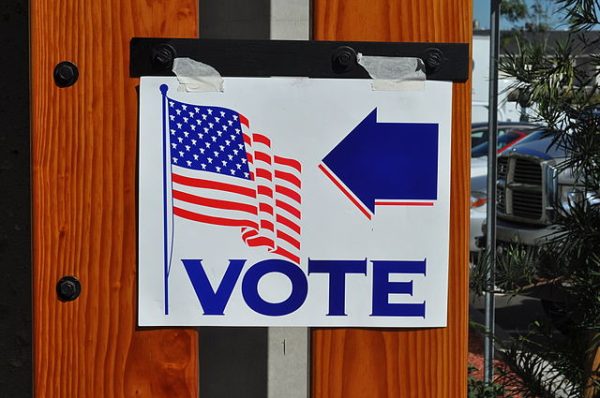A look back at Title IX
February 16, 2018
One of my earliest memories from childhood was swimming on a summer league team with my friends. Although I wasn’t very good, I loved the idea of being able to compete every Saturday morning, June through August. The rush of diving off the blocks and then flailing my arms to the other side of the pool was the highlight of every weekend.
My love for swimming at a young age helped me choose the path I am on today. After a successful high school career both in and out of the pool, I knew I wanted to compete at the collegiate level. I decided to apply early decision to Washington and Lee and soon became a member of the women’s varsity swim team. However, this opportunity, and the opportunity for women throughout the country to participate in college athletics, would never have been possible without the courageous female student-athletes that came before us.
As a nation, we are approaching our 46th year of Title IX, a part of the Education Amendments of 1972. The law requires that male and female students be treated equally under education programs that are receiving financial assistance from the government. These programs include collegiate athletics.
Previously, female athletes often did not receive the same treatment as their male counterparts. Not nearly as many sports were offered to women, and scholarships to play in college were few and far between. Men’s teams were often given preferential training times and venues, as well as better equipment. With the creation of Title IX, this could no longer be the case.
According to the NCAA, the participation of women in NCAA sports has grown every year for the past 15 years. Even as late as
1989, only 34% of NCAA athletes were female. However, as of the 2016-2017 season, the number climbed to 44% of student athletes. The NCAA Women’s Sports Inventory shows that the organization currently offers 17 championship sports for female athletes, as well as three mixed-team championship sports. Equestrian, rugby, sand volleyball, and triathlon are all considered to be “emerging sports.”
Washington and Lee currently offers 11 NCAA sports for female athletes. During the 2016-2017 season, 15 female athletes received All-American recognition for their success.
However, despite all of the opportunities Title IX opened for college athletes, there are still numerous obstacles to overcome. Last week, the Contact Committee brought Professional soccer player Mia Hamm to campus to speak to the student body about women in athletics. The room was packed with faculty, students, and community members. While Hamm spoke about the positive impacts Title IX had on her career, she also discussed how much more still needs to be done for women to be equal. “I think we’ve made tremendous progress in the classroom, we’ve made tremendous progress on the competition field, but just like anything we don’t stand still,” Hamm said during the interview.
While Title IX has made major improvements to the participation of women in athletics throughout the country, I am looking forward to seeing what the next few decades will bring. Hopefully, the NCAA will soon have an equal number of male and female participants, and a women’s team sporting event will draw just as big of a crowd as a men’s competition. It’s up to our generation to take the next step.













Warren J Potash • Feb 17, 2018 at 6:30 am
Having successfully trained more than 600 teen female athletes playing every sport since 1995, I am hoping that in the near future teen female athletes will understand the need got train to play sports..
Title IX provides the opportunity for sports participation and great strides have occurred.. But, right now is the tip of the iceberg. Much more needs to be done to help all female athletes.